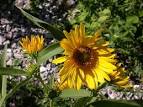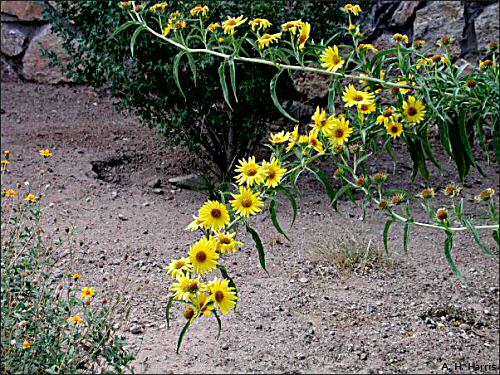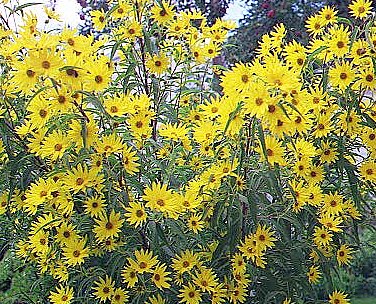Helianthus maximiliani (A Species of Sunflower)
Helianthus maximiliani




Helianthus maximiliani (also, H. maximilianii) is a species of sunflower known by the common name Maximilian sunflower.
Native to much of the eastern half of North America, it is found in parts of the western half as an introduced species. The plant thrives in a number of ecosystems, particularly across the plains in central Canada and the United States. It is also cultivated as an ornamental.[1]
A branching perennial herb, growing from a stout rhizome and reaches heights from one half to three meters. The lance-shaped leaves are narrow, pointed, folded down the midvein, and up to 30 centimeters long on large plants. The slender, tall, erect stems and alternately-arranged leaves are covered in rough hairs. The flower heads are surrounded at the base by pointed green phyllaries which often stick straight out and curl at the tips. The center is filled with yellow tipped brown disc florets and the circumference is lined with bright yellow ray florets 2 to 4 centimeters long.
The plant reproduces by seed and by vegetative sprouting from the rhizome. The thick rhizome is edible and provided a food similar to the Jerusalem artichoke for Native American groups such as the Sioux. The flower heads are attractive to insects and the fruits are eaten by birds. This sunflower is named for Prince Maximilian of Wied-Neuwied, who encountered it on his travels in North America.
The Land Institute, a perennial agriculture research center located in Salina, Kansas, run by Wes Jackson is experimenting with this species to create a perennial oilseed grain crop that does not necessitate replanting each season.
Kingdom: Plantae
(unranked): Angiosperms
(unranked): Eudicots
(unranked): Asterids
Order: Asterales
Family: Asteraceae
Genus: Helianthus










No comments:
Post a Comment